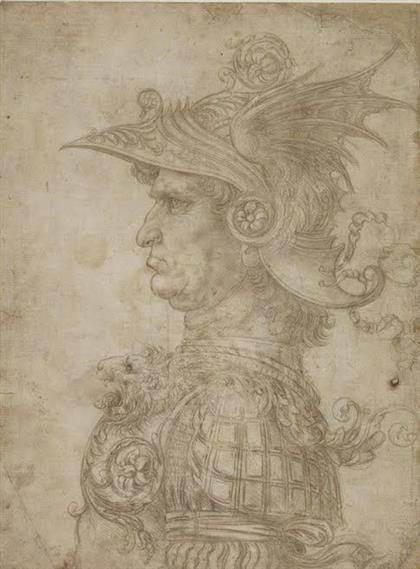
Leonardo da Vinci, A Bust of a Warrior, c. 1475/1480
silverpoint on cream prepared paper
On loan from The British Museum, London
© The Trustees of The British Museum, London
Drawing in Silver and Gold. National Gallery Washington National Gallery of Art, Washington, presents ‘Drawing in Silver and Gold: Leonardo to Jasper Johns’, the first comprehensive exhibition on the evocative medium of metalpoint. May 3 through July 26, 2015.]]>
Source: National Gallery of Art, Washington
Organized chronologically, “Drawing in Silver and Gold” showcases the practice of metalpoint in the work of artists ranging from Leonardo, Albrecht Dürer, and Rembrandt to Otto Dix and Jasper Johns. While the exhibition offers fresh insights into well-known works of the Renaissance by the artists most commonly associated with the medium, it also sheds new light on other periods and regions, such as 17th-century Netherlands, Victorian Britain, and the continued exploration of metalpoint by modern and contemporary artists.
The exhibition opens with some of the earliest and most renowned examples of the medium, such as “Portrait of a Young Woman” (c. 1435/1440), the only drawing generally attributed to Rogier van der Weyden. Netherlandish Renaissance draftsmen took advantage of the medium’s subtlety to create stunningly detailed depictions of the human face.
The permanence and portability of the medium also made it popular for sketchbooks, especially with German Renaissance artists. Three sketchbook pages by Dürer, most notably the sensitive “Dog Resting” (1520), as well as examples from other artists over the centuries, are on view in the exhibition.
Four works by Leonardo are featured in the Washington exhibition, including “Bust of a Warrior” (c. 1475/1480), one of the most widely admired drawings in the history of art. The Italian Renaissance section also includes a spectacular selection of silverpoints by other masters, such as two sheets from Raphael’s famous “pink sketchbook.”
Drawings by Hendrick Goltzius and Rembrandt, who represent the last flowering of metalpoint before its decline in the 18th century and subsequent revival by Victorian artists such as William Holman Hunt and Edward Burne-Jones in the 19th century, provide the opportunity for new investigations of these less frequently studied periods.
The exhibition concludes with a section on modern and contemporary artists. Sometimes inspired by the drawings of their predecessors, artists as varied as Joseph Stella, Jasper Johns, and Bruce Nauman have also pushed the medium in new directions, experimenting with unexpected drawing implements, subject matter, and techniques.
Related content
Italy lends Titian’s “Danaë” to the National Gallery of Washington (exhibition, 2014)
Follow us on:


